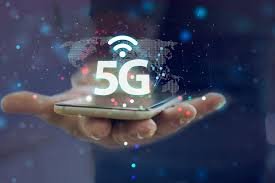5G and Beyond: How Next-Gen Connectivity is Transforming Industries
Introduction: The 5G Revolution
As we step into 2024, the rollout of 5G technology is revolutionizing connectivity and transforming industries worldwide. This next-generation wireless network promises faster speeds, lower latency, and the ability to connect a vast number of devices simultaneously. This article explores the impact of 5G on various sectors, the technologies driving its implementation, and the future of connectivity.
1. The Advantages of 5G Technology
5G technology offers several key advantages that set it apart from its predecessors:
- Increased Speed and Bandwidth: 5G networks provide significantly higher data transfer speeds compared to 4G. Users can download and upload content at lightning speeds, enabling seamless streaming, gaming, and communication. This enhanced bandwidth allows for more devices to be connected without compromising performance.
- Low Latency: One of the standout features of 5G is its low latency, which is crucial for applications requiring real-time responsiveness. Industries such as gaming, telemedicine, and autonomous vehicles benefit immensely from the rapid communication capabilities offered by 5G networks.
- Support for IoT Expansion: The Internet of Things (IoT) is poised for explosive growth with 5G. The technology can support millions of connected devices in a small area, enabling smart cities, connected vehicles, and advanced manufacturing processes. This increased connectivity fosters innovation and efficiency across various sectors.
2. Transformative Applications Across Industries
5G technology is reshaping multiple industries, each reaping the benefits of enhanced connectivity:
- Healthcare: In the healthcare sector, 5G enables telemedicine and remote patient monitoring, allowing healthcare providers to deliver services more efficiently. Real-time data transmission supports remote surgeries and enhances diagnostics through high-definition video consultations.
- Manufacturing: Smart factories are emerging as a result of 5G technology, where machines communicate with each other in real-time to optimize production processes. Predictive maintenance powered by IoT sensors ensures minimal downtime and increased operational efficiency.
- Transportation: The transportation sector is experiencing a transformation with the advent of connected and autonomous vehicles. 5G technology facilitates vehicle-to-everything (V2X) communication, enabling vehicles to communicate with traffic signals, other vehicles, and infrastructure for improved safety and efficiency.
3. The Role of Edge Computing
As 5G technology advances, edge computing is becoming a vital component of the ecosystem:
- Reduced Latency: Edge computing brings data processing closer to the source, reducing latency and enabling faster response times. This is particularly important for applications requiring real-time data analysis, such as autonomous driving and augmented reality.
- Enhanced Security: By processing data locally, edge computing can enhance security measures. Sensitive data can be analyzed and acted upon without the need to transmit it to centralized servers, reducing the risk of data breaches.
- Optimized Resource Utilization: Edge computing optimizes bandwidth usage by only sending essential data to the cloud. This reduces network congestion and ensures efficient resource allocation.
4. Future Trends and Considerations
Looking ahead, several trends are expected to shape the future of connectivity beyond 5G:
- 6G Research and Development: Research into 6G technology is already underway, aiming to further enhance speed, capacity, and connectivity. Expected features include even lower latency and the integration of artificial intelligence to optimize network performance.
- Sustainability and Energy Efficiency: As connectivity expands, there will be a growing focus on sustainable practices. Future networks will likely prioritize energy-efficient technologies and environmentally friendly solutions to minimize their carbon footprint.
- Regulatory Frameworks: The rapid rollout of 5G and emerging technologies will necessitate the establishment of regulatory frameworks to ensure fair competition, protect consumer privacy, and address cybersecurity challenges.
Conclusion: Embracing a Connected Future
The advent of 5G technology marks a significant leap in connectivity, transforming industries and enhancing everyday experiences. As we embrace this new era, it is essential to address the challenges and opportunities that arise with next-gen connectivity. By harnessing the potential of 5G and beyond, we can drive innovation, improve efficiencies, and create a more connected world.











